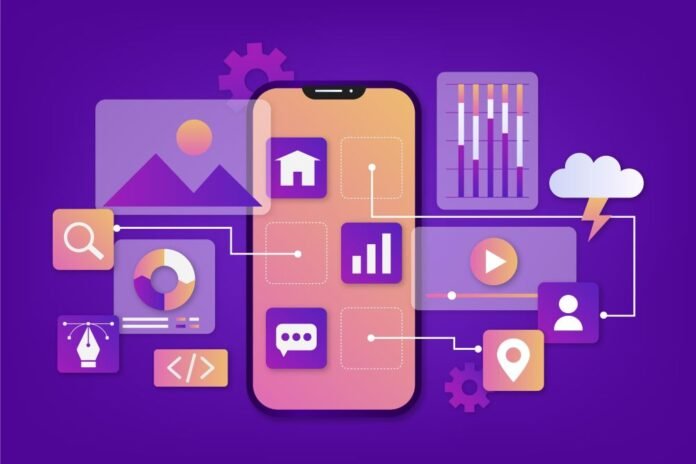In the ever-evolving landscape of technology, iPhone app development stands at the forefront, continually pushing boundaries and setting new standards. As we delve deeper into 2024, the focus on security in iPhone app development has never been more critical. With an increasing number of cyber threats and heightened user awareness about data privacy, developers are facing unprecedented challenges in safeguarding user data. In this article, we’ll explore the latest security trends in iPhone app development and strategies to protect user data effectively.
The Evolution of iPhone App Development
Since the inception of the App Store, iPhone app development has come a long way. From simple utilities to complex, AI-powered applications, the ecosystem has flourished, offering users an extensive array of services and functionalities. However, this growth has also attracted malicious actors looking to exploit vulnerabilities for personal gain.
The Importance of Data Security
In today’s digital age, data is akin to currency. From personal information to financial details, users entrust app developers with sensitive data, expecting it to be handled securely. Any breach of this trust can have severe repercussions, ranging from identity theft to reputational damage for the app developer. Hence, prioritizing data security is not just a legal obligation but also a moral imperative.
Emerging Threats in 2024
As technology advances, so do the tactics employed by cybercriminals. In 2024, iPhone app developers face a myriad of threats, including:
- Ransomware Attacks: Ransomware has become increasingly sophisticated, targeting not only large corporations but also individual users through malicious apps. These attacks encrypt user data, demanding a ransom for its release.
- Phishing Schemes: Phishing remains a prevalent threat, with scammers using deceptive techniques to trick users into divulging sensitive information such as passwords and financial details.
- Data Breaches: With the proliferation of data-driven applications, the risk of data breaches looms large. Whether due to insecure APIs or inadequate encryption protocols, a single breach can compromise millions of user records.
Security Trends in iPhone App DevelopmentTo mitigate these threats and enhance data security, developers are adopting various trends and best practices:
- End-to-End Encryption: Implementing end-to-end encryption ensures that data is encrypted at rest and in transit, making it unreadable to unauthorized parties. This cryptographic technique has become a standard practice in messaging apps and is increasingly being adopted across other sectors.
- Biometric Authentication: Leveraging biometric authentication, such as Touch ID and Face ID, adds an extra layer of security by verifying users’ identities through unique physiological traits. This not only enhances user experience but also reduces reliance on vulnerable passwords.
- Zero-Trust Architecture: In a zero-trust architecture, access to resources is granted based on strict verification criteria, regardless of whether the user is inside or outside the network perimeter. By assuming that every access attempt is potentially malicious, this approach minimizes the risk of unauthorized access.
- Continuous Security Testing: Adopting a proactive approach to security, developers are integrating continuous security testing throughout the app development lifecycle. This involves conducting regular vulnerability assessments, code reviews, and penetration testing to identify and remediate security flaws promptly.
- Blockchain Technology: While still in its nascent stages, blockchain technology holds promise for enhancing data security in iPhone app development. By decentralizing data storage and employing consensus mechanisms, blockchain-based apps can mitigate the risk of central points of failure and unauthorized tampering.
- Compliance with Privacy Regulations: With the enactment of stringent privacy regulations such as the General Data Protection Regulation (GDPR) and the California Consumer Privacy Act (CCPA), developers must ensure compliance with these frameworks. This includes obtaining explicit user consent for data collection, implementing data minimization practices, and providing users with transparent control over their data.
Best Practices for Protecting User DataIn addition to adopting the aforementioned security trends, developers should adhere to the following best practices to protect user data effectively:
- Secure Data Storage: Utilize secure storage mechanisms such as Keychain Services and Data Protection API to safeguard sensitive user data, such as passwords and cryptographic keys, from unauthorized access.
- Secure Network Communication: Implement secure communication protocols such as HTTPS and Transport Layer Security (TLS) to encrypt data transmitted between the app and backend servers, thereby preventing interception and tampering by malicious actors.
- Regular Security Updates: Stay vigilant against emerging threats by promptly issuing security updates and patches to address known vulnerabilities. Encourage users to update their apps regularly to ensure they are protected against the latest threats.
- User Education: Educate users about the importance of data security and provide guidance on how to identify and mitigate potential risks, such as avoiding suspicious links and practicing good password hygiene.
- Data Minimization: Adopt a principle of data minimization by only collecting and retaining the minimum amount of data necessary to fulfill the app’s functionality. Delete outdated or unnecessary data promptly to reduce the risk of exposure in the event of a breach.
- Third-Party Risk Assessment: Before integrating third-party libraries or SDKs into your app, conduct thorough security assessments to evaluate their trustworthiness and potential impact on data security.
ConclusionIn conclusion, ensuring data security in iPhone app development is paramount in 2024. By staying abreast of emerging threats, adopting the latest security trends, and adhering to best practices, developers can safeguard user data effectively and uphold the trust placed in their apps. Ultimately, prioritizing data security not only protects users but also preserves the integrity and reputation of the app ecosystem as a whole. As technology continues to advance, it is imperative that developers remain vigilant and proactive in mitigating evolving cyber threats.





